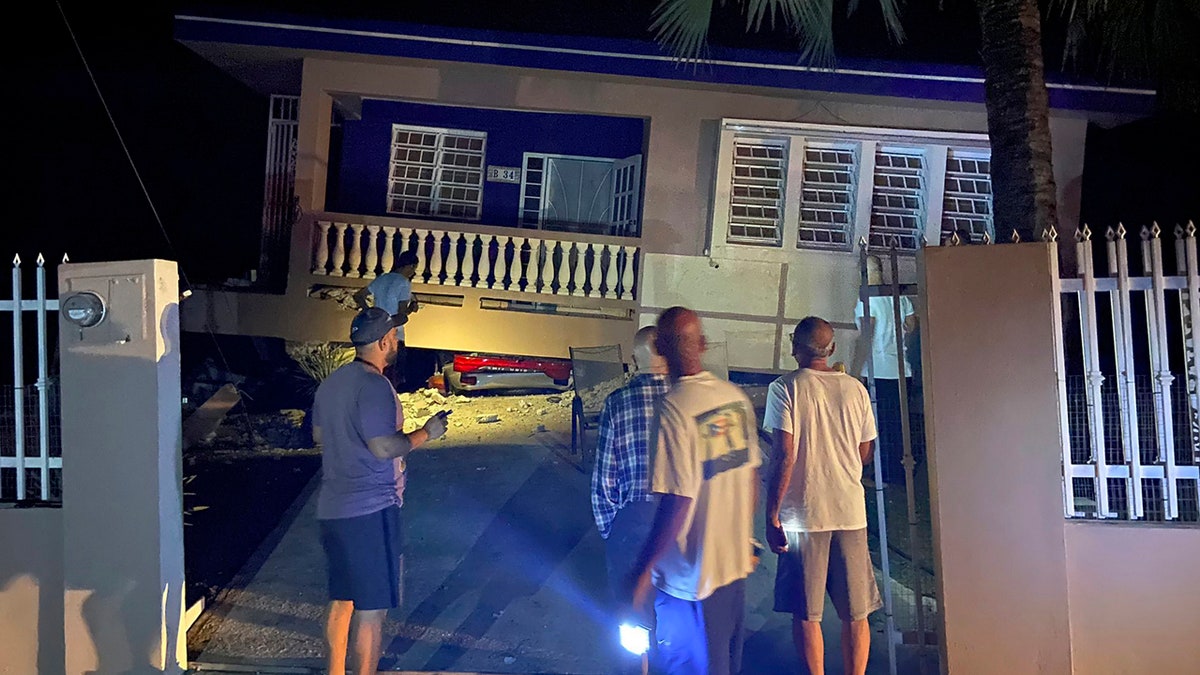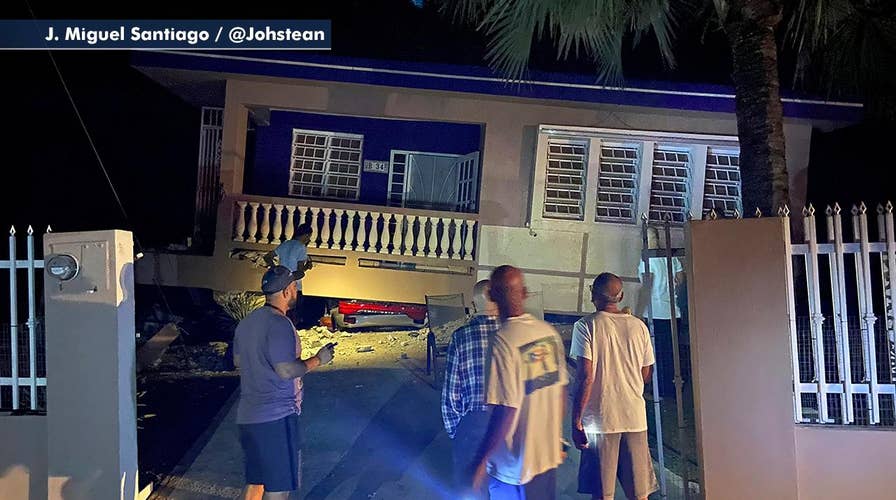6.4 magnitude earthquake rattles Puerto Rico
An earthquake hitting off the southern coast of Puerto Rico reportedly causes major damages and power outages.
A rock formation in Puerto Rico that was a popular tourist destination was reduced to rubble after the first of two powerful earthquakes rocked the island Monday.
The natural rock formation, known as "Punta Ventana" or Window Point, was a bridge in the form of a window or hole in Guayanilla on the island's southern coast.
The arch was just one of the few naturally occurring arches on the island until a 5.8-magnitude quake that struck early Monday morning off the island's southern coast caused it to collapse.
PUERTO RICO HIT WITH 6.4 MAGNITUDE EARTHQUAKE, ISLANDWIDE BLACKOUT REPORTED
The Monday morning earthquake destroyed five homes in Guánica and heavily damaged dozens of others. It also caused small landslides and power outages. The quake was followed by a string of smaller temblors.
Glidden López, a press officer for Guayanilla council, wrote on Facebook: "Playa Ventana has collapsed. Today our icon rests in everyone's memory."

A natural formation known as "Punta Ventana," or Window Point, stands without the bridge that once created the formation of the window, or a hole, in Guayanilla, Puerto Rico. (AP Photo/Jorge A. Ramirez Portela)
Denniza Colon, a resident of Guayanilla, told the Miami Herald it was "really sad" to see the iconic arch turned into a pile of rubble after the quake.

This combo of two photos shows "Punta Ventana," or Window Point, in Guayanilla, Puerto Rico on Jan. 27, 2019, top, before it fell, and after it fell on Jan. 6, 2020 due to an earthquake. (Edgar Gracia Portello via AP, top, and AP Photo by Jorge A Ramirez Portela, bottom)
“It was one of the biggest tourism draws of Guayanilla," she told the paper.
In an earlier post, López said the rock formation had been damaged by previous tremors in recent days. The flurry of quakes in Puerto Rico's southern region began the night of Dec. 28.

Local officials said the rock formation had been damaged by previous termors before the quake on Monday. (Edgar Gracia Portello via AP, left, and AP Photo by Jorge A Ramirez Portela, right)
Seismologists say that shallow quakes were occurring along three faults in Puerto Rico’s southwest region: Lajas Valley, Montalva Point and the Guayanilla Canyon, as the North American plate and the Caribbean plate squeeze Puerto Rico. Monday's earthquake that brought down Punta Ventana had been the strongest yet until a 6.4-magnitude earthquake struck Puerto Rico before dawn on Tuesday.
PUERTO RICO HIT WITH 5.8 MAGNITUDE EARTHQUAKE IN LARGEST OF FLURRY OF TEMBLORS IN REGION
The 6.4-magnitude quake that left at least one man dead and eight others injured cut power to the island as power plants shut down to protect themselves. A tsunami alert was issued for Puerto Rico and the U.S. Virgin Islands after the initial quake but was later canceled.

Cars are crushed under a home that collapsed after an earthquake hit Guanica, Puerto Rico, Monday, Jan. 6, 2020. (AP Photo/Carlos Giusti)
Albert Rodríguez, who is from the southwest town of Guánica, told The Associated Press the tsunami sirens went off before officials canceled the alert. He said there is widespread damage in his neighborhood.
“The road is cracked in the middle and it lifted up,” he said.
Authorities said two plants suffered light damage, and they expected power to be restored later Tuesday. Puerto Rico's main airport was operating normally, using generator power.
CLICK HERE FOR THE FOX NEWS APP
After the 10-day series of temblors, seismologists have said it's impossible to predict when the quakes will stop or whether they will get stronger.

A collapsed building with car crushed underneath, following an earthquake in Yauco, Puerto Rico, Tuesday Jan. 7, 2020. (J. Miguel Santiago Twitter via AP)
One of the largest and most damaging earthquakes to hit Puerto Rico occurred in October 1918, when a magnitude 7.3 quake struck near the island’s northwest coast, unleashing a tsunami and killing 116 people.
The Associated Press contributed to this report.









































